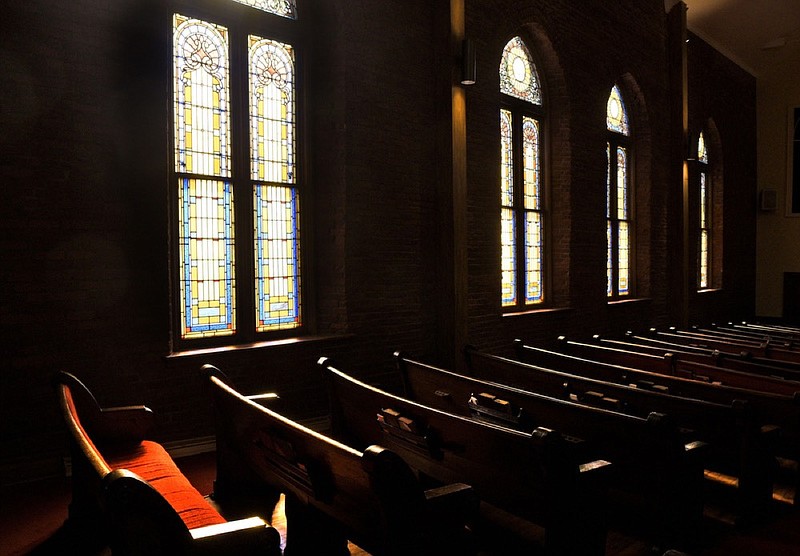EDITOR'S NOTE: This article is part of "Religion: Got questions?," a series answering your biggest religious questions. Each week, we will answer one submitted faith question. To send a submission visit timesfreepress.com/religionquestions or email wmassey@timesfreepress.com.
Question: Why do we sit in pews?
If you think pews are uncomfortable, just be thankful there is at least something to sit on. Until the Middle Ages, churchgoers had to stand for the service. This practice had a theological background, according to a history by St. Nicholas Church in Connecticut. Faith is intended to be an active practice and Christians are taught to stand in the presence of their master, rather than sit like an audience.
The few people who had seats brought their own, though the tradition of lengthy services was not common, according to an 1844 argument by John Coke Fowler about abolishing pews.
The feudal system of the time bled into the religious landscape. Wealthy people who paid for church buildings were given prominent places in the church to sit and passes those seats down to their children, according to the Encyclopedia Britannica.
Families could also rent places in the church to sit while the poor had to stand. This practice continued after the Reformation in the 16th century, and the demand for pews increased as Protestant churches pushed service times longer and longer. Paying rent on a place to sit where others could see you became common, especially in the Anglican church, according to the book "The Victorian Church: Architecture and Society."
At one point, the use of paying for a spot in church got out of hand to the point clergy directed churches to not erect pews higher than what was necessary so others could see what was happening in them. People were putting up rings, curtains and locks, and bringing cushioning to their place in church, Fowler wrote.
The first pews were designed to be comfortable for congregants, according to the 1872 book "The History and Law of Church Seats, Or Pews." The long, bench-like design accommodated entire families who would come to church together and likely stuck around as tradition. As pews become more common, the designs at the ends, such as carved wood or painted pictures, became more elaborate.
Today, new churches are often opting to move away from pews and use padded, stackable chairs for seating. This again opens up church spaces for uses beyond church services.
From the reporter
I became a journalist to help people see people as people. But highlighting the human side of every policy decision, and how it is affecting your community, takes time as well as support from readers. If you believe in telling the stories of people in your community, please subscribe to the Times Free Press today. Contact me at wmassey@timesfreepress.com or 423-757-6249. Find me on Twitter at @News4Mass.
